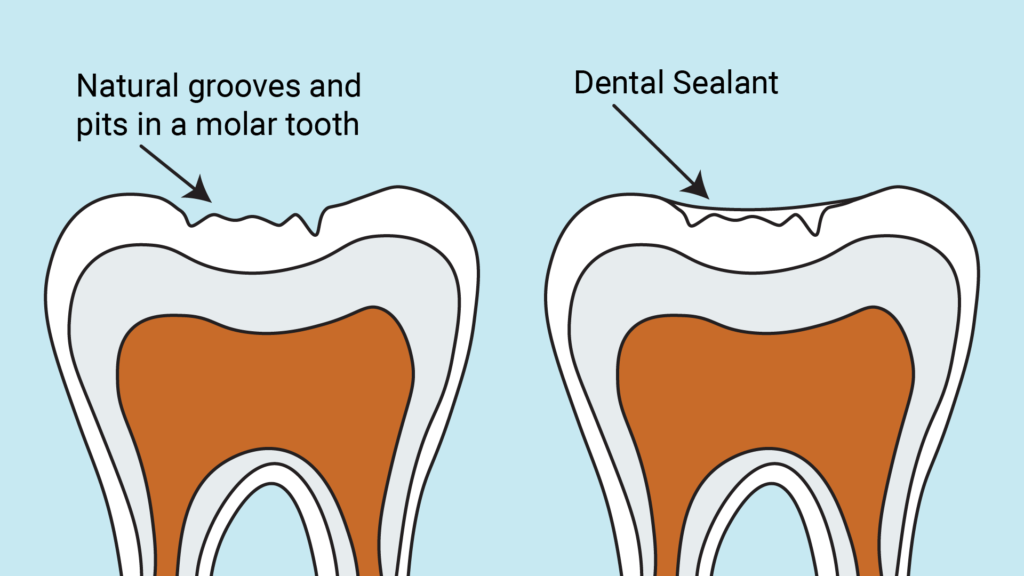Sometimes, the best prevention is a layer of protection. Take a baking sheet out of the oven and you’ll probably protect your hand from the heat with an oven mitt or towel. Go out in the rain and a raincoat or umbrella is your best bet if you want to stay dry. In this blog post, we’ll explain what dental sealants are — and how they function in a similar way.
Protecting our teeth is essential. Dental sealants add a layer of protection to your teeth, helping ward off decay-causing acids, sugars, and bacteria. They are an especially effective option for children, in part because insurance often covers them up to a certain age. Sealants are about as simple as they sound, and they are a great way to keep your teeth healthy and protected from cavities. When it comes to prevention, sealants are a fantastic option.
How Do Sealants Work?
Dental sealants act as coatings, filling in any pits or grooves on a chewing surface to form a protective layer over a tooth’s enamel.

Typically, sealants are applied to the chewing surfaces of molar teeth, but they can be applied elsewhere as needed. For example, sometimes sealants can be placed on the back surface of a front tooth that has exceptionally deep grooves.
Sealants may be applied by a dentist or, depending on the specific state’s laws, a dental hygienist or dental assistant. In some states, physicians and other medical staff may also apply dental sealants.
What are Sealants Made of?
Sealants are typically applied in the form of a liquid resin that becomes hard when cured. If you ever had a sealant applied, a cavity filled, braces attached, or any similar dental procedure, you may remember your dentist or hygienist using a tool that almost looks like an electric toothbrush without any bristles.
That tool is what “cures” the liquid sealant, leaving behind a rigid, protective layer.
Do Sealants Work?
Yes, sealants are very effective. According to the CDC, dental sealants can prevent 80 percent of cavities for two years. They have been proven to protect against 50 percent of cavities for up to four years, and there is evidence that they can work for up to nine years.
It is easy for a provider to tell when a sealant either falls off or is worn away, and fortunately they are easy to replace!
Are Dental Sealants Safe?
It is important to note concerns about BPA entering a patient’s system from dental sealants. Fortunately, several studies have been conducted to measure BPA exposure from sealant application, and the widespread consensus is that they are completely safe.
Some BPA may be detectible in a patient’s saliva hours after a sealant is applied, but no associated increase in BPA levels has been detected in patients’ blood at any time post-sealant application.
BPA can imitate a person’s naturally produced hormones, causing an array of health issues. It is an important environmental concern, but fortunately, dental sealants are not a source for concern.
In fact, breathing in dust or touching a receipt will expose a person to much more BPA than a dental sealant application.
How Much Do Sealants Cost?
Some dental plans cover sealants, especially for children. For patients without insurance or with insurance that doesn’t cover sealants, they typically cost between $30 and $75 per tooth. This is a lot more affordable compared to the price of a filling ($150-$450) or other more invasive treatment.
The cost can vary by provider, insurance, and material used, so it is important to ask your dentist to get a better idea of the price tag for dental sealants.
NCOHC, a program of the Foundation for Health Leadership & Innovation, works to advance systems-level changes, improving the overall health and well-being of all North Carolinians by increasing access and equity in care. To stay up-to-date and get involved, join us today as a North Carolinian for Change.


